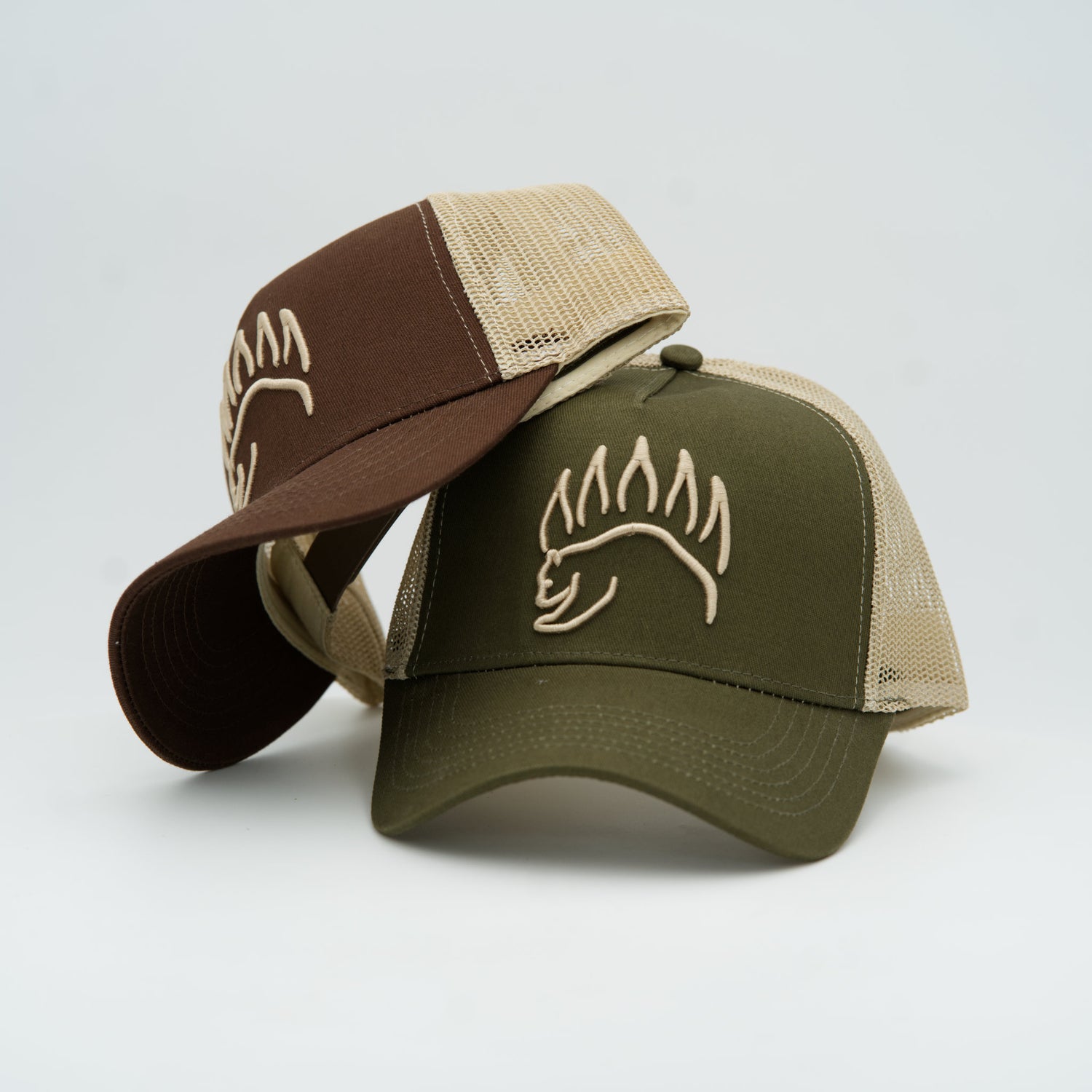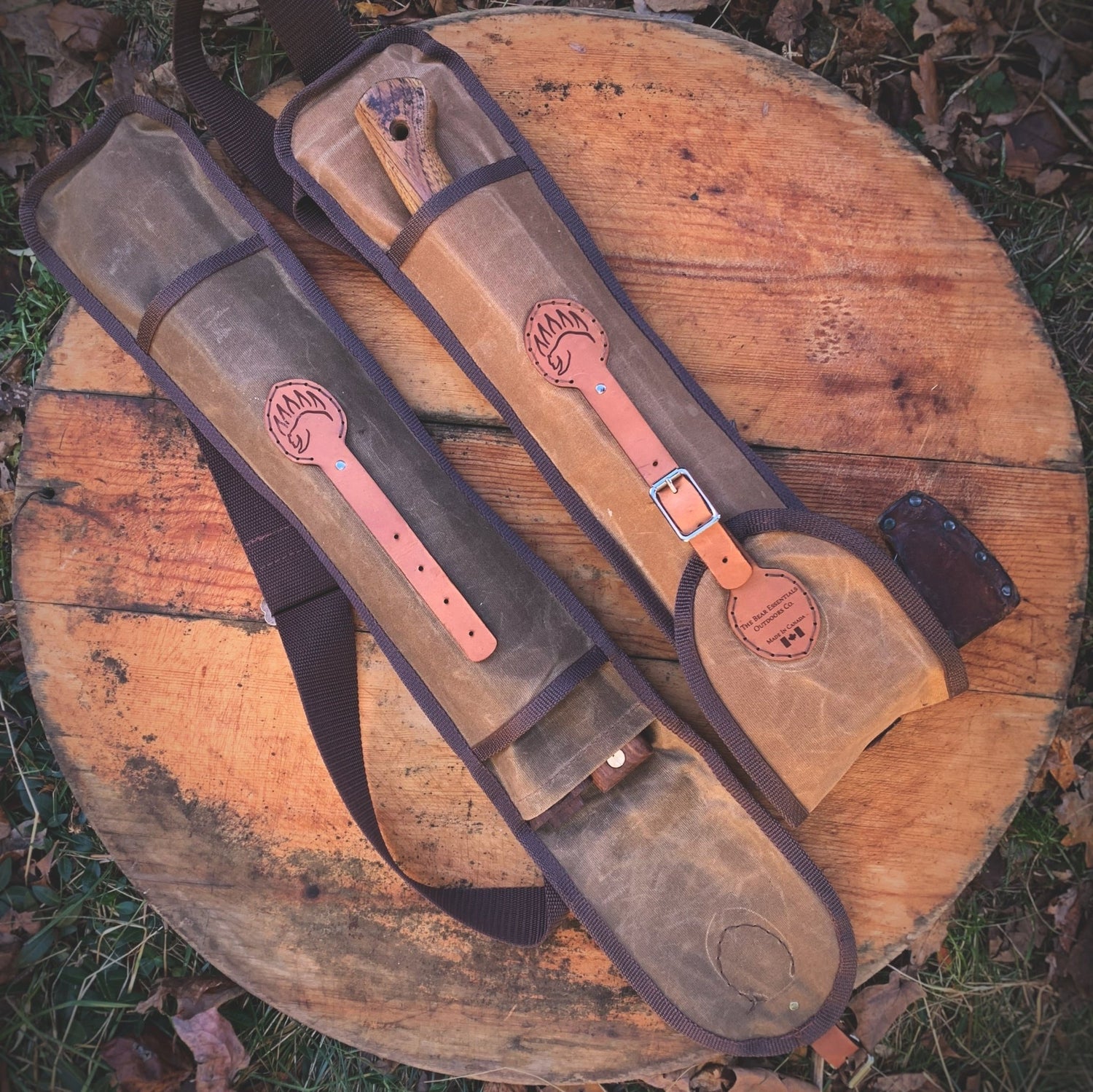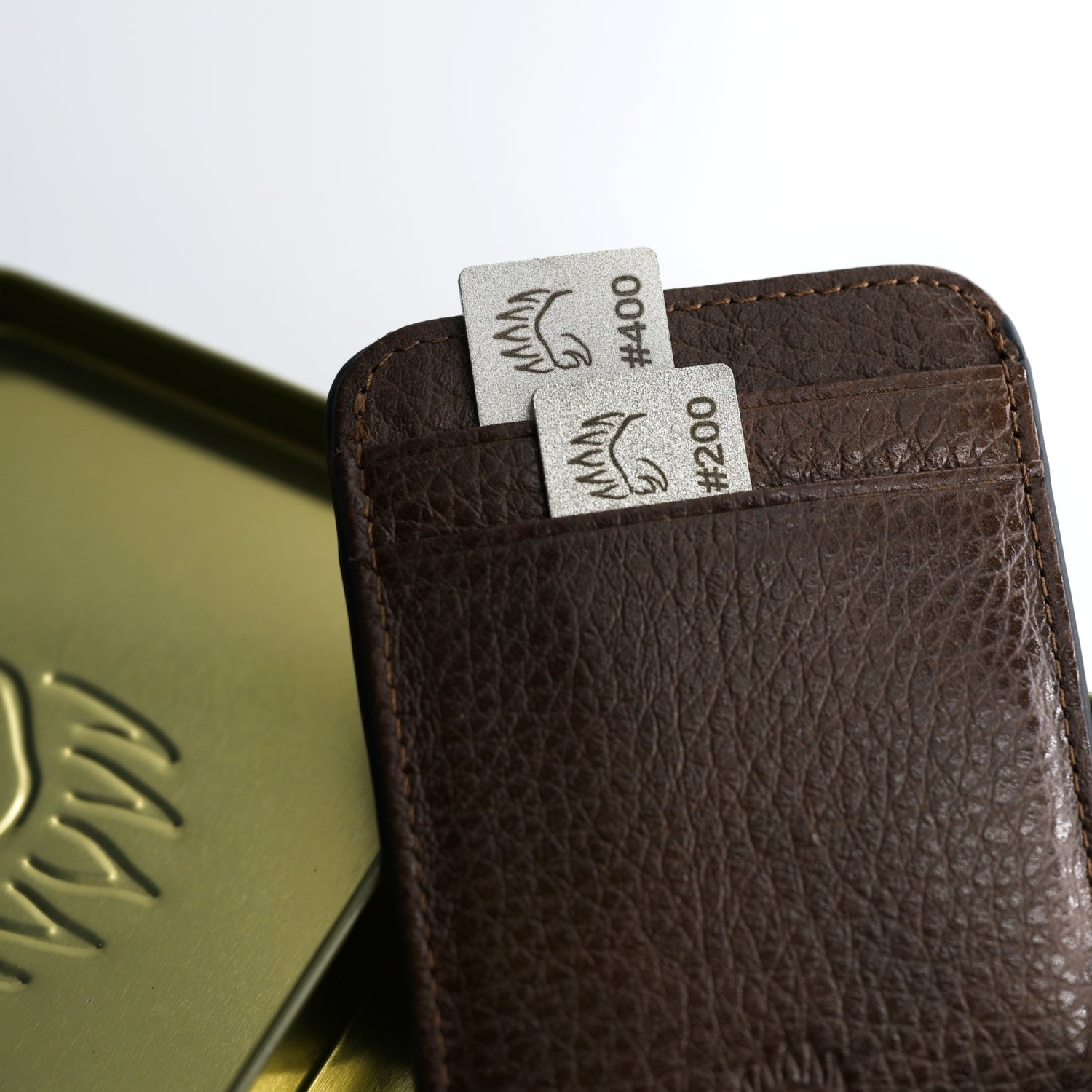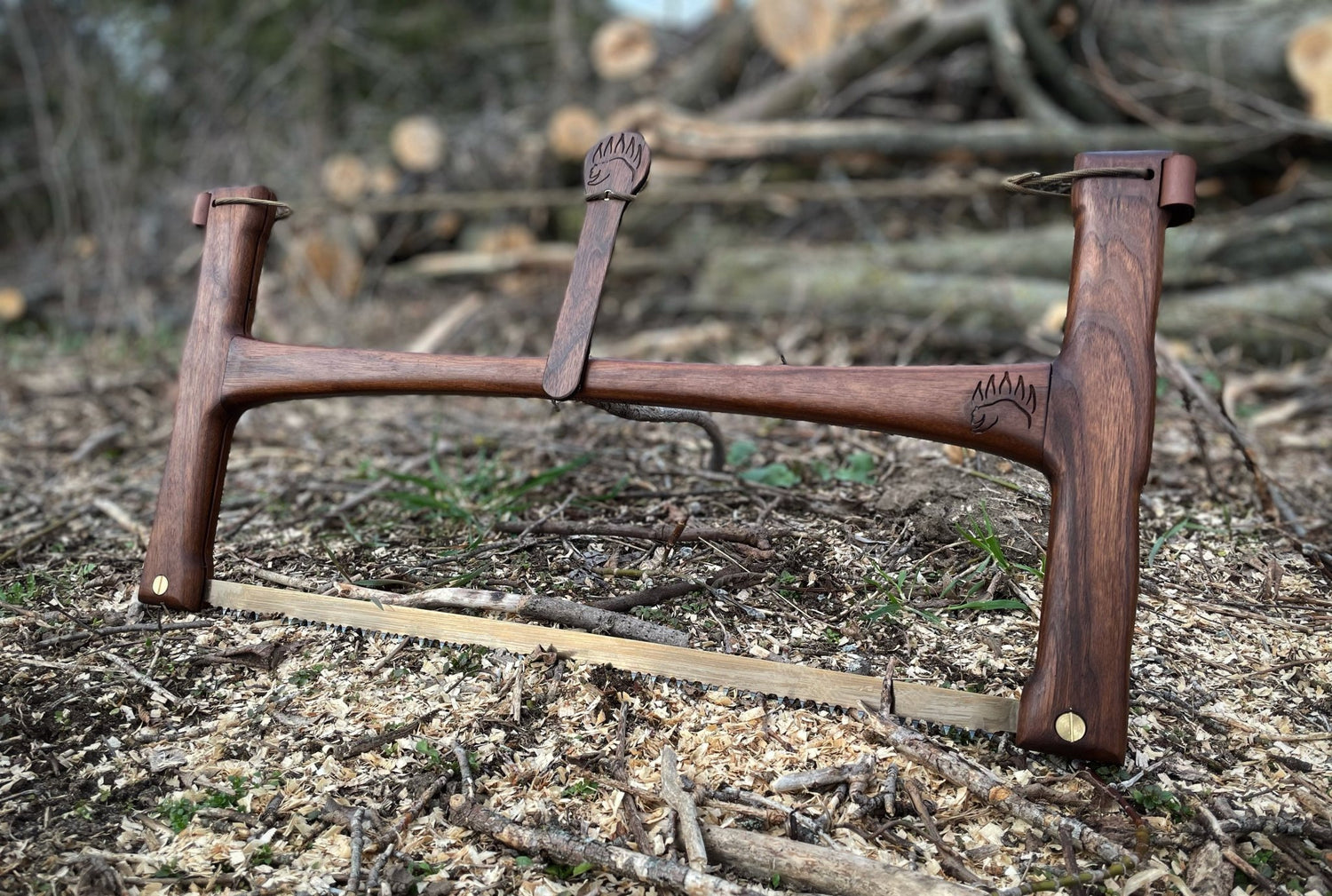Affiliate disclosure: This guide contains affiliate links to gear I use and trust. If you buy through them, I may earn a small commission at no extra cost to you but helps support my blog and Youtube channel.
If you’ve ever stepped out on a bluebird morning and somehow ended the day shivering in a shelter, you already know: winter punishes small mistakes.
After a lot of miles in the Canadian cold and plenty of humbling lessons, I can tell you most people don’t suffer because they lack cold weather gear—they suffer because they misuse it.
This guide unpacks the most common errors with cold weather clothes and shows you how to fix them fast.
It’s practical, no-nonsense, and built from what actually works in camp, on trail, and during those long, windy minutes when your fingers stop listening.
The One Rule That Beats Extreme Cold Weather: Stay Dry
Moisture is the enemy.
Sweat, melted snow, wet cuffs, damp socks—any water kills insulation and invites convective heat loss.
Build your system around moisture control first, warmth second.
That’s the DNA of every good cold weather base layer, midlayer, and shell choice you’re about to read.
If you want to skip around, here are a few field-tested pieces I lean on in this system: thin liners like the Injinji Liner Crew Toesocks, a breathable mesh top like the Brynje Super Thermo Long Sleeve and a storm shell like the Outdoor Research Foray 2 Jacket when weather moves in.
Basics of Layering Cold Weather Clothes
- Base = manage moisture. Thin, fast-drying, high-wick—think merino wool base layer, light synthetic, or mesh base layer in high output. A light merino base like the First Lite Merino X Midweight Quarter-Zip Top works across temps. For mesh under high output, try Brynje Super Thermo Longs bottoms.
- Mid = add heat. Fleece, synthetic puffy, or light down; move it on or off instead of cooking in it while moving.
- Shell = block wind or wet. Softshell jacket for dry, cold exertion; hardshell jacket for storm, spindrift, and wet snow. Vent early and often. I usually rotate a stretchy softshell—Revolution Race Hi-Ball —with a storm-worthy hardshell or Foray 2.
Mistake #1: Wearing the Thickest Socks You Own While Moving
Why it backfires: Thick socks trap heat during activity → feet sweat → socks get damp → toes freeze when you stop.
Fix it:
- Hike in a thin liner (synthetic or merino). This wicks moisture and reduces friction.
- Swap into thicker wool only when you’re static.
- Carry a spare liner pair in a zip bag and change at lunch. Dry feet = warm feet.
-
A little antiperspirant on feet for big days can help.

When it matters most: Snowshoeing, climbing skin tracks, or any stop-and-go day where “I’m fine” turns into “I can’t feel my toes.”
What I pack: Liner phase = Injinji Liner Crew Toesocks; camp phase = thick cushioned wool like Darn Tough Boot Sock Full Cushion or very-thick Icelandic-style wool (JB Fields).
Mistake #2: Winter Hiking Boots That Fit Like Summer Sneakers
Why it backfires: Tight boots reduce blood flow and compress insulation. Wet, constricted feet get cold—fast.
Fix it:
- Size winter boots ½–1 size up to fit your thick sock and allow toe wiggle.
- Try boots on with your intended liner + sock combo.
-
Loosen laces on climbs (more blood flow), snug for descents (control).
Pro move: If you’re frequently static (ice fishing, photography), add a removable insole and swap a dry one at lunch.
Sorel Pack Boots worked well for me. But if you run cold at the toes, I’ve had better luck with removable-liner styles (faster to dry overnight) like the big warm Baffin Eiger Boots. For slushy trail days, rubber-upper styles from Kamik Rubber Boots, keep meltwater out.
Mistake #3: Cotton Underwear with Performance Layers
Why it backfires: Cotton hoards moisture and kills warmth. One damp waistband can chill your whole core.
Fix it:
- Wear merino or synthetic underwear as your cold weather base layer—yes, merino wool base layer underwear exist.
- For high output, try a mesh base layer under a wind-resistant short; the mesh dumps heat but still wicks.
- The best base layer for cold weather isn’t the heaviest—it’s the one that stays dry under your workload.
Easy swap: Merino briefs/boxers like Icebreaker 150 ride comfortably under layers and dry fast.
Mistake #4: Choosing Heavy Cold Weather Base Layers for High Output
Why it backfires: 250–300 GSM baselayers are mini midlayers. You’ll sweat during ascents, then freeze at lunch.
Fix it:
- Start cold: 120–170 GSM merino or light synthetic; half/quarter-zip for venting.
- Stash a static midlayer for breaks (synthetic puffy or hi-loft fleece).
-
If you constantly overheat, try a mesh base layer; it’s ugly-good at moisture control.

Two tops that cover most days: a light merino zip for steady cold, and a mesh like Brynje Super Thermo Long Sleeve for steep, sweaty climbs.
Mistake #5: Wearing All Your Midlayers While Moving
Why it backfires: You sweat out your insulation. Once wet, it can’t warm you at rest.
Fix it:
- Hike in a minimal action suit: light base + softshell jacket (or wind shirt) in dry cold.
- Keep fleece/puffy in your pack; wear them only when you stop.
-
Pre-empt the sweat: before a climb, vent zips and pop your hat off.
DJ’s blunt rule: If you’re toasty at the trailhead, you’ve already made a mistake.
Action-suit combo I use: thin base + Revolution Race Hi-Ball softshell; puffy stays in the pack for breaks.
Mistake #6: Expecting Your Softshell Jacket To Breathe Like a Screen Door
Why it backfires: Membranes move vapor…slowly. Big output overwhelms any hardshell jacket.
Fix it:
- Use pit zips, hem zips, and full side zips like a thermostat. Open them before you overheat.
- Dry cold, low precipitation: a softshell jacket breathes better and keeps you drier overall.
- Wet storms or heavy snow: switch to a hardshell jacket with aggressive venting.
- For pants, side zips let you vent or swap layers without taking off boots.

Mistake #7: Keeping the Same Damp Base Layers All Day
Why it backfires: Damp = cold. “It’s a hassle” is how trips go sideways.
Fix it:
- Pack a “dry kit” in a zip bag: base top, base bottom, socks, liner gloves.
- Use full-zip midlayers and side-zip pants to change fast behind a tree or inside your shelter.
-
Swap at lunch—yes, it’s cold for 60 seconds; you’ll be warmer for hours.
Winter camping gear tip: Sleep in a dry base, not the one you hiked in.
My “dry kit” recipe: mesh/merino combo top (Brynje Inlay merino over mesh on colder days), fresh liner socks (Injinji Liner Crew), and a zip-off merino bottom (First Lite Kiln).
Mistake #8: Betting on Gloves When You Needed Mittens
Why it backfires: Fingers insulated separately can’t share heat. Gloves = dexterity; mittens = warmth.
Fix it:
- Carry a system: thin liner gloves + warm mittens with removable liners.
- Add chemical warmers on top of the liner (back of hand), not under your palm.
- If you run cold or it’s very wet, a thin vapor-barrier glove (think nitrile) under the liner can help—controversial but effective for some.
Dexterity hack: Pull mitts to the wrist with a retention cord, do the fine task, mittens back on—seconds, not minutes.
Warmth system that works: liners plus expedition-grade mitts like the Outdoor Research Alti Mitts.
Mistake #9: Forgetting a Neck Gaiter
Why it backfires: Exposed neck = massive convective loss. You also breathe colder, dryer air and feel chilled.
Fix it:
- Wear a neck gaiter or light balaclava; rotate positions with effort level.
- Don’t breathe into it while climbing—soaked fabric stops insulating.
- Combine gaiter + hood for storm mode; drop to scarf mode when moving.
Easy win: a merino gaiter like Villand Merino Wool Neck Gaiter weighs little and adds outsized comfort.
Mistake #10: One Beanie for All Jobs
Why it backfires: That cotton beanie is a sponge. When it’s wet, you’re cold and cranky.
Fix it:
- Go merino or hi-loft synthetic. 100% merino retains warmth when damp and resists stink on multi-day trips.
- Use hood stacking: light beanie for movement, hood up for wind, puffy hood for stops. For extreme cold weather clothing, add a windproof shell hood or a balaclava.
What I wear most: a 100% merino toque like the Bear Essentials Merino Wool Beanie.
Mistake #11: Under-Fueling and Under-Drinking
Why it backfires: You are the furnace. Low water or calories = low heat production.
Fix it:
- Warm, salty drinks on breaks; insulated bottle sleeves so your water isn’t a popsicle.
- Eat early and often. Fats for staying power, simple carbs for immediate heat.
- If you can’t pee clear(ish), you’re behind on fluids—even in the cold.
Mistake #12: Letting Your Sleep System Absorb Your Day
Why it backfires: Going to bed damp turns your bag/quilt into a sponge and the cold weather gear version of Groundhog Day.
Fix it:
- Change into a fully dry merino wool base layer at camp.
- Sleep socks = sacred; never hike in them.
- Crack your shelter for ventilation to reduce frost and bag wet-out.
- In the morning, reverse: hike out in yesterday’s “dirty” base and keep the sleep set dry.
Camp luxury that pays off: down or synthetic booties keep morale high while you cook and stretch—pair them with roomy shells or your big mitts like the OR Alti Mitts for quick tent chores.
Mistake #13: Standing in the Wind Because “The View Is Nice”
Why it backfires: Wind strips heat, steals moisture, and makes even big parkas feel small.
Fix it:
- Micro-relocate. Ten meters behind a spruce or snow berm = fifteen degrees warmer in feel.
- Build a snow wall, tuck behind boulders, or switch your break spot to leeward.
- Wear the right shell for the day: softshell jacket in dry, hardshell jacket in spindrift or wet snow.
Wind picking up? I’ll throw the Foray 2 over my softshell and lock down the hem/pit zips.
Mistake #14: Dressing the Same for the Climb and the Descent
Why it backfires: You overheat on the way up and freeze on the way down.
Fix it:
- Ascent (high output): light base + wind shirt or stretchy softshell jacket; hat off, zips open.
- Summit or stop: immediately throw on a puffy or warm fleece.
- Descent (windy/cold): close vents, maybe upgrade to a hardshell jacket, add warmer gloves.
-
Think in cold weather outfits—pre-planned combos, not random layers.
Pre-planned swap: softshell (Hi-Ball) for the climb, then hard-shelling up with the Foray 2 for the ride down.
Mistake #15: “One Size Fits Tight” Cold Weather Gear Layering
Why it backfires: Compression kills loft; short hems and tight cuffs create cold bridges.
Fix it:
- Choose midlayers that still loft under your shell.
- Sleeve length should cover to mid-glove with arms extended; hem should overlap harness or hipbelt.
- Pants with a touch of articulation prevent cuffs from riding up when you step high.
- Try layers together in the shop—build your system, not single pieces.

How to Build a Modular Cold Weather Clothing Kit
- Base (active): 120–170 GSM merino wool base layer or light synthetic; consider mesh base layer for ski touring or fast snow hikes.
- Base (static): A dry change for camp. That’s your “pajama” layer.
- Mid (active): Grid fleece or light synthetic (vests are underrated—warm core, vented pits).
- Mid (static): Synthetic puffy; down is okay in cold/dry but baby it around moisture.
- Shell (active): Softshell jacket for breathability in cold/dry; wind shirt for bluebird fast-and-light.
- Shell (storm): Hardshell jacket with good pit zips; hardshell pants with side zips to vent/swap.
- Hands: Liner glove + warm mittens (removable liners). Carry a spare liner set.
- Head/Neck: Light beanie, neck gaiter, storm hood.
- Feet: Liner + sock system, roomy boots, spare liner socks.
- Winter camping gear extras: Down/synthetic booties for camp, over-mitt shells, and a small repair kit (tenacious tape, needle, safety pins).
Plug-and-play picks: Bases—Brynje Super Thermo mesh + merino zip (First Lite Quarter-Zip); Storm shell—OR Foray 2; Softshell set—Revolution Race Hi-Ball Jacket and GP Expedition Pro Pants; Hands—liners + OR Alti Mitts; Neck/Head—Villand Merino Gaiter and Bear Essentials Merino Beanie; Socks—Injinji Liner Crew + Darn Tough Full Cushion.
Temperature Bands For Cold Weather Outfits
- Around −5 °C to 0 °C (dry trail, moving): Light base, wind shirt/softshell jacket, beanie in pocket, thin liner gloves. Puffy stays packed for breaks.
- −10 °C to −20 °C (mixed exertion): Light base + grid fleece, softshell + light puffy at stops; mittens ready; neck gaiter on standby.
-
Below −20 °C or high wind (static work, ice fishing, long belays): Heavy mid + big synthetic parka, expedition mitts, double socks in roomy boots. This is extreme cold weather clothing territory—zero tolerance for dampness.
Ready-to-go bundles: For −5 °C to 0 °C: mesh top (Brynje Super Thermo), light merino zip (First Lite), Hi-Ball softshell. For −10 °C to −20 °C: add GP Expedition Pro pants and mitt upgrade (OR Alti Mitts). Sub-−20 °C static: big removable-liner boots like Baffin Eiger.
Budget and Sourcing Quality Cold Weather Gear
- Military surplus: Wool liners, mitt shells, over-pants.
- Thrift stores: Fleece and synthetic puffies hide on racks for cheap.
- Spend smart: Prioritize the base layer (comfort), shell (safety), and boots (circulation). Brand names are nice; function wins.
Deal-first picks to watch: Darn Tough socks go on sale seasonally; softshells like the Hi-Ball are often discounted off-season.
Winter Camping Gear Fixes You’ll Actually Use
- Frozen zippers: Warm with hand heat, don’t force; a snapped slider ends the day.
- Icy gaiter hook: Rotate your laces so the hook meets un-iced lace.
- Snow in cuffs: Close wrist closures before plunging into snow, then open for venting during climbs.
-
Wet gloves emergency: Liner gloves in your jacket interior, not your pack; your core heat will dry them by dinner.
Tiny upgrades with big payoff: keep a spare pair of Injinji Liner Crew socks and a compact mitt like the OR Alti in an outside pocket for fast swaps.
Decision Tree (10-Second Cold Weather Gear Choices)
- Sweating while moving? Dump heat: open vents, switch to softshell jacket, remove hat.
- Chilled at the stop? Add puffy first, then warmer mitts, then gaiter/hat.
- Wind rising? Shift to leeward, close vents, upgrade to a hardshell jacket.
- Cold feet while static? Dry liner, thicker sock, loosen boot, stomp/wiggle, add insulated booties in camp.
-
Damp base at camp? Change immediately; that’s non-negotiable.
A Note on Safety and Context
Winter hiking gear isn’t just clothing—navigation, light, and emergency shelter matter too—but clothing discipline gives the highest return per ounce.
Practice changes at home: time yourself swapping a base top under a jacket without taking your pack off.
Train your hands to vent zippers before you sweat. The cold rewards people who think one move ahead.
Quick links to the exact items mentioned (USA):
Socks — Injinji Liner Crew • Darn Tough Full Cushion • JB Fields Very Thick
Boots — Baffin Eiger • Kamik Rubber w/ Liner • Sorel Pack Boots
Underwear — Icebreaker 150 Merino
Bases — Brynje Super Thermo LS • Brynje Longs • First Lite Quarter-Zip • First Lite Kiln Bottoms • Sitka 330 GSM 3/4 Zip
Shells — OR Foray 2 Jacket • Revolution Race Hi-Ball Softshell • Revolution Race GP Expedition Pro Pants
Hands — Liner Gloves • OR Alti Mitts
Neck/Head — Villand Merino Gaiter • Bear Essentials 100% Merino Beanie
Cold Weather Gear in a Nutshell: Warmth Isn’t a Jacket, It’s a System
The secret isn’t a miracle parka—it’s a system that keeps you dry while moving and insulated while resting.
Thin, wicking cold weather base layer for motion; honest midlayers you put on/off instead of steaming in; shells chosen for the day (softshell jacket for breathability, hardshell jacket for weather). Mittens over gloves when it matters, neck gaiter and hood management, roomy boots with the right socks, and a habit of changing out of damp layers even when it’s inconvenient.
Get those habits right and your cold weather gear stops being a pile of fabric and starts being a furnace you can control.
That’s the difference between surviving winter and loving it.




